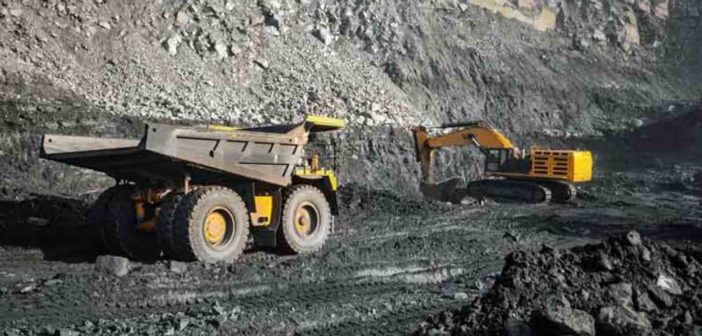India has set a target to increase domestic coal production by approximately 42% over the next five years, from around 1,080 million tonnes (MT) in 2025-26 to about 1,533 MT by 2030-31. At the same time, Coal mine accidents (both fatal & serious) have continued over the years resulting in 226 deaths between 2020 and 2024.
Despite the COP26 agreement to accelerate efforts towards the phasedown of coal power, India is set to increase coal production significantly. According to a parliamentary reply dated 3 February 2025, coal production is projected to increase by approximately 42% over the next five years, from around 1,080 million tonnes (MT) in 2025-26 to about 1,533 MT by 2030-31.
Alongside this rapid expansion, the issue of coal mine accidents remains a critical concern. The increasing number of fatal incidents in coal mines underscores the urgent need for enhanced safety measures. A recent accident in Madhya Pradesh, where the collapse of a coal mine roof resulted in the deaths of three workers, has once again highlighted the dangers faced by mine workers and the ongoing risks to their safety, health, and lives.
Data from the Department of Environmental Science & Engineering of IIT Dhanbad reveals that in just the first two and a half months of 2025, a total of eight mining accidents have occurred across various mines in India, claiming 20 lives — five of these accidents took place in coal mines. Such accidents continue to result in fatalities, disabilities, and severe injuries, severely impacting the lives of workers, employees, and their families.
In this story, we look at coal production trends, mine accidents, compensation provided, and the legal framework governing mining accidents, using data sourced from parliamentary responses and Dataful.
Domestic Coal Production has increased substantially in India
Coal remains the primary fossil fuel for electricity generation in India. According to the Ministry of Coal’s monthly statistics report, as of February 2025, coal (excluding lignite) accounts for approximately 76% of the total power generated in the country. With the growing demand for electricity, the demand for coal has also surged. A parliamentary reply dated 22 July 2024 indicates that coal demand rose by 11% within a year, increasing from 1,115 MT in 2022-23 to 1,233 MT in 2023-24.
Alongside rising demand, domestic coal production has seen significant growth over the decades. Data from the Ministry of Finance, curated by Dataful, shows that India’s coal production (excluding lignite) was 32 MT in 1950-51. By 1980-81, this had risen to 114 MT. The following decade saw an 86% increase, bringing production to 212 MT by 1990-91. Subsequent decades witnessed steady growth, with coal production reaching 310 MT in 2000-01, 533 MT in 2010-11, and 716 MT in 2020-21.
If domestic coal production reaches the projected 1,533 MT by 2030-31, as stated in the parliamentary reply, it will mark the highest-ever decadal increase (114%) since 1950-51, highlighting the unprecedented expansion of coal mining in India.
Decadal increase in Coal Production
| Year | Coal Production (in MT) | Decadal Increase (in %) |
| 1980-81 | 114 | |
| 1990-91 | 212 | 86 |
| 2000-01 | 310 | 46 |
| 2010-11 | 533 | 72 |
| 2020-21 | 716 | 34 |
| 2030-31 (Projected) | 1539 | 114 |
Source: Dataful, and Rajya Sabha reply dated 3 February 2025
Apart from domestic production, India also imports Coal from other countries, which contributes to about 20-25% of coal demand in India. As per the parliamentary reply dated 25 November 2024, the total coal imports have increased from 248 MT in 2019-20 to 264 MT in 2023-24. Indonesia and Australia are the two major countries from which over 150 MT of coal is imported each year.
Number of Accidents in Coal Mines more than those in other mines
The Director General of Mines Safety (DGMS) defines fatal accidents in mines as those in which at least one death is involved. However, serious injury is defined as any injury which involves the permanent loss of many parts or sections of the body or the use of any part or section of a body, or the permanent loss or incapacity or the fracture of any bone or one or more joints or bones or any phalanges of hand or foot.
As per the recent parliamentary reply dated 12 March 2025, India recorded between 60 and 80 fatal accidents and over 150 serious accidents each year across all types of mines between 2020 and 2024. The number of serious accidents in coal mines consistently exceeded those in non-coal mines. Similarly, except for the year 2022, the number of fatal accidents in coal mines was higher than in other types of mines.
The data further reveals that during this period, serious accidents in coal mines were over 70% higher than those in non-coal mines, highlighting the significant safety concerns in the coal mining sector.
Telangana had the highest number of serious accidents each year
The parliamentary reply dated 12 March 2025 also provides state- and mine-wise figures for fatal and serious injury accidents in coal mines between 2020 and 2024. According to this data, accidents occurred in nine states during this period. The highest number of fatal accidents were reported in Chhattisgarh (2020), West Bengal (2021), Jharkhand (2022 & 2023), and Madhya Pradesh (2024).
In the case of serious accidents, Telangana consistently recorded the highest number each year, with approximately 80 to 125 annual incidents between 2020 and 2024.
A similar pattern is observed in the number of fatalities and the number of people seriously injured in both fatal and serious accidents.
Measures taken for safety of people working in Coal mines
Data from 2020 to 2024 reveals that a total of 195 fatal accidents and 726 serious accidents occurred in coal mines, resulting in 226 deaths and 770 serious injuries. This means that, on average, a coal mine accident occurred every second day during this period, with fatalities or serious injuries happening just as frequently.
As per the parliamentary reply dated 29 July 2024, several measures have been implemented under the Mines Act, 1952, the Coal Mines Regulations (CBR), 2017, and other by-laws to enhance worker safety in coal mines. These include the following:
- Preparation and implementation of Site-Specific Risk Assessment based Safety Management Plans (SMPs)
- Preparation and implementation of Principal Hazards Management Plans (PHMPs)
- Formulation and compliance with Site-specific Risk Assessment, Standard Operating Procedures (SOPs)
- Conducting Safety Audit of mines through multi-disciplinary Safety Audit teams
- Adoption of the state-of-the-art mechanism for Strata Management.
- Monitoring of mine environment
- Certain specific measures for Open Cast Mines
- Training on Mine Safety
- Mine Safety Inspection
The list highlights measures taken to prevent accidents. However, the persistently high number of accidents occurring regularly underscores the need for further deliberation and the adoption of additional safety measures.
Action taken against officials responsible for accidents
Under the Mines Act, after the mine accidents, the DGMS is required to conduct an enquiry on factors leading to mine accidents and suggest corrective measures to avoid future recurrence. Further, the mine manager or assistant manager authorized by the mine manager and safety manager are also required to conduct enquiry on fatal and serious accidents.
The parliamentary reply dated 29 July 2024 provided the following details of different types of action against officials, who were identified as responsible for fatal and serious accidents.
As per the above data, between 2020 & 2023, a total of 95 officials were prosecuted, 56 were suspended, the increment was withheld for 126 officials, 41 officials were removed from service, 1 official was removed from statutory post, 17 officials were given demotion, 50 officials were censured, promotion of 6 officials promotion was withheld, and 107 officials were warned by the management.
The same reply also revealed that between 2020 & 2023, a total of ₹16.7 crores was paid as compensation to those who died or were seriously injured.
Ambitious goals of increasing coal production require critical issues to be resolved
The data highlights that coal mine accidents remain a critical issue requiring urgent intervention. With India aiming to increase coal production by 50% in the next five years, the frequency of such accidents is likely to increase.
Beyond safety concerns, this massive expansion in coal production also raises questions about India’s commitment to its COP26 pledge to generate 50% of its electricity from renewable sources by 2030. As of today, 75% of India’s electricity still comes from coal-fired power plants. Additionally, the recent United Nations (UN) Emissions Gap Report has flagged India as the only country among six major GHG-emitting countries that continued to increase coal-fired power generation between 2000 and 2020. With plans to ramp up coal production, India’s ability to meet its 2030 renewable energy target remains a concern.



